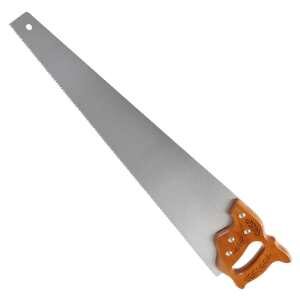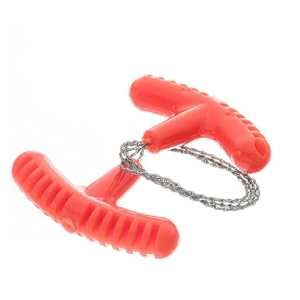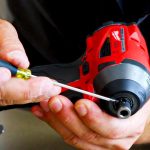Table of Contents
Saws are the kind of tools you cannot avoid whether you work with wood or metals. Because except them you cannot get your ingredients in proper length. Using the wrong saw on the wrong arsenal may damage your work. Hence, we will explain ten primarily used saw types and their aspects over their fifty benign variants so that you can find out which one is made for your specific projects.
1. Table saw
Table saw is named after its design. You probably noticed them in a woodshop or visited the factory where big piles of wood planks are brought onto the table to cut into pieces. Once the machine is started, you have to push the wood towards a wide blade or disc, rotating faster.
This saw comes with a stationary tabletop, and you can adjust the speed manually. Also, this saw has some variants of its own like job site saw, hybrid saw, compact saw, sliding saw, the contractor saw, and the list goes on for a while. Table saw is for professionals only, and it needs special training to operate the saw safely.

2. Reciprocating
Reciprocating saw provides a back-and-forth motion to deliver strikes. It gives a better holding position to work above the ground. Again, this saw is electric or gas-powered and very compact to carry around. You can get total usage of this saw only if you are a pro woodworker.
But during use, you will get some benefits, such as cutting through a corner horizontally or vertically as needed. It is vital to have a tight grip so that the blade does not slip on the starting of the reciprocating saw.

3. Jigsaw
Designed to cut curves and details, the jigsaw has a thin blade that can be tracked around a cutout, so you get precisely the design you want without breaking the cutout edges. This saw is powered by fuel or electricity and works the same as a circular saw.
But instead of rotating the disc, this saw makes a blade go up and down multiple times, counted as strokes per second. The jigsaws are suitable for DIY and furniture work as you can make a cutout design out of a board. You can also have a basic straight-line cut as well as other saws.

4. Circular Saw
A Circular saw is designed to cut following a straight line. It is the motorized version of the handsaw having a round build design. First, this saw is very portable for construction and carpentry jobs, and it deals with wood and some other materials specifically. To use it, you have to place it on a flat wooden plank or board.
Powering through a trigger, the saw immediately starts a motor that rotates a round disc having sharp teeth. Hence, this saw is so fast and also dangerous. Indeed, you have to check the saw blade guard and wear the necessary protection before operating a circular saw. Overall, if your job is about making wooden furniture, this saw is a must for you.

5. Chainsaw
Chainsaws are driven by electric or fuel power to rotate a chain to cut wide lumber like a big tree. After powering on, a motor started spinning a chain attached to a guide bar and merged with deadly teeth.
The length of the bar varies from 12 to 36 inches long. You can adjust the speed of a chainsaw however you want to cut faster or slower. But you have to be careful while cutting as the saw gives powerful kickbacks. So, always wear PPE, gloves, and a helmet before starting a chainsaw.

6. Crosscut Saw
Crosscut saw is a very traditional saw with its retro look and compact design. The crosscut saw is equipped with two handle parts for two people, and this is sawed used to cut the wider trunks and stems.
The saw is thicker in form factor and has comparatively larger teeth to provide more abrasion to cut through the dense grain of the tree. No matter how advanced the electric saws are nowadays, crosscut saw is still a popular tool for high-level jobs. If you are a professional woodcutter, this tool is of value to you.

7. Wire Saw
Wire saw, a very different saw which is highly demanded in some specific task. This saw is one of the types of equipment for any rescue worker because it’s easily portable. Unlike any traditional saw, the wire saw does not have sharp teeth, but it is a pile of twisted metal wire.
If you wonder how it works when a tree falls on the road due to a land crash, you can use a wire saw to start cutting the tree immediately through the higher amount of friction the wire creates. Besides, it can cut rocks into parts for industrial purposes. This saw is ideal for a hiker in any survival scenario. To use it faster, you will need thick gloves to avoid hand fatigue.

8. Coping Saw
If you plan to use a hacksaw to cut thinner wood, use a coping saw that is a little bit different and suitable for cutting into wood. In particular, it has a thinner blade that won’t break even if you make a curvature in your cut. The best part of a coping saw is its ability to cut through a hole or even a cutout.
The coping saw is much lighter, and it can contain six and third-quarter-inch blades having 10 to 32 teeth per inch. So, for making crafts or cutting through holes, this saw is a good pick for precision.

9. Hacksaw
The hacksaw is a light and compact saw specially designed for cutting metals. Besides metals, it can cut through PVC and soft materials depending on blade types. The regular teeth blades have no space in between them.
Still, every tooth angle is placed in a different direction, either forward or backward, intending to cut soft metal and other materials. On the contrary, wavy blades are positioned with a multi-angular-teeth alignment to create a more expansive cutting line to avoid abrasion.

10. Handsaw
Handsaw is the most general saw in the saw category. You are vastly familiar with this saw if you ever witnessed any carpentry work. This saw is a hundred percent muscle-powered and comes in four variations in teeth alignment.
Thus, you can have rip-cut, cross-cut, or Japanese crosscut depending on the damage rate you prefer in the wood fiber. Since the handsaw has a sturdy handle and a longer body, your workshop work cannot be convenient without them. The handsaw provides strokes to the exterior part. But whatever, this saw is much safer to use if you have a tight grip.

Conclusion
These were ten different types of essential saws depending on their features and working circumstances. We hope now you know how the saw world and how it will finish your desired project.










Leave a Comment